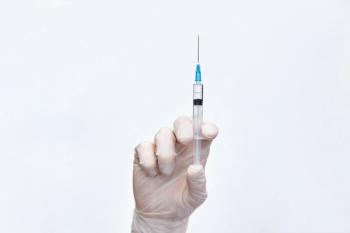
Hospitals at risk for hazardous pharmaceutical waste violations
The EPA is looking for mismanagement of hazardous pharmaceutical waste generated by hospitals and other healthcare facilities. The odds are good that your hospital is in violation.
"Two-thirds of U.S. hospitals are not fully compliant with EPA requirements," warned Tim Vanderveen, PharmD, vice president, CareFusion Center for Safety and Clinical Excellence, during a recent webinar, sponsored by CareFusion. "Pharmacists and pharmacy technicians can be held personally liable for violations in which they are involved."
Hospitals seldom set out to violate EPA provisions. They just don't realize that they are subject to EPA regulation, said Fred Massoomi, PharmD, pharmacy operations coordinator, Nebraska Methodist Hospital, Omaha, Neb. He became involved when the hospital was found in violation of EPA's Resource Conservation and Recovery Act (RCRA) regulations in 2004 for the EPA U-listed chemical cyclophosphamide waste handling and manifesting.
It's an easy target. In 2008, EPA estimated that hospitals produce about 12 million pounds of hazardous waste annually, Massoomi said. His hospital, with 400 licensed beds, has more than 459 separate locations at which hazardous pharmaceutical wastes can be generated.
Defining "hazardous waste"
The good news is that fewer than 5% of drugs qualify as hazardous waste (Table 1), said Lisa M. Lauer, an official with EPA Materials Recovery and Waste Management Division, Office of Resource Conversion and Recovery, Washington, D.C.
Drugs used for their intended purpose are not hazardous waste, Lauer said. A nicotine patch, which has been used on a patient as intended and then discarded, is not hazardous waste. But a nicotine patch that was discarded without being used is hazardous waste.
Drug containers can also be hazardous waste if they contain drug residue. Hospitals face a difficult choice, Lauer said. They can treat the containers as hazardous waste or triple rinse the containers and treat the rinsate as hazardous waste.
EPA has made some adjustments for healthcare, she added. Used syringes are not hazardous waste, for example. Warfarin residues less than 0.3% qualify for less stringent handling requirements. But almost any amount of hazardous waste can leave facilities subject to penalties that can mount into the hundreds of thousands of dollars.
EPA has a cradle-to-grave policy for hazardous waste handling that includes generation by hospital pharmacies and patient-care operations, transport by waste haulers, storage, and eventual treatment. Most states have their own hazardous waste programs, she added.
"EPA is setting the baseline for regulation," Lauer warned. "Some states are more stringent than federal regulations."
Newsletter
Pharmacy practice is always changing. Stay ahead of the curve with the Drug Topics newsletter and get the latest drug information, industry trends, and patient care tips.




